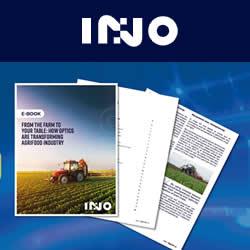Cargill and Cainthus intend to first focus on the global dairy segment, but will expand to other species, including swine, poultry and aqua over the next several months.
Cargill brings facial recognition capability to farmers through strategic equity investment in Cainthus
Contributed by | Cainthus
Cargill and Cainthus, a Dublin-based machine vision company, are reshaping how animal producers make decisions for their livestock through a strategic partnership that will bring facial recognition technology to dairy farms across the world. The deal includes a minority equity investment from Cargill. Terms were not disclosed.
.jpg)
Cainthus uses breakthrough predictive imaging to monitor the health and wellbeing of livestock.
Cainthus’ imaging technology can identify individual cows by their features in several seconds to memorize a cow’s unique identity, recording individual pattern and movements.
(3).jpg)
Cainthus uses breakthrough predictive imaging to monitor the health and wellbeing of livestock. Their proprietary software uses images to identify individual animals based on hide patterns and facial recognition, and tracks key data such as food and water intake, heat detection and behavior patterns. The software then delivers analytics that drive on-farm decisions that can impact milk production, reproduction management and overall animal health.
"We are enthused about what this partnership will mean for farmers across the world," said David Hunt, president and co-founder, Cainthus. "Cargill is a natural partner for us, given their focus on bringing a world-class digital capability to the market and their understanding of how technology will truly help farmers succeed. We think this partnership will be a game changer for farmers because it will allow them to efficiently scale their business."
Cainthus' imaging technology can identify individual cows by their features in several seconds to memorize a cow's unique identity, recording individual pattern and movements. That information is used as part of an artificial intelligence-driven mathematical algorithm that conveys imagery into feed and water intake analysis, behavioral tracking and health alerts that can be sent directly to the farmer. Data gleaned from those images is used to anticipate issues and adjust feeding regimens. What used to be a manual process that took days or weeks now takes place in near real-time.
"Our shared vision is to disrupt and transform how we bring insights and analytics to dairy producers worldwide," said SriRaj Kantamneni, managing director for Cargill's digital insights business. "Customers' ability to make proactive and predictive decisions to improve their farm's efficiency, enhance animal health and wellbeing, reduce animal loss, and ultimately increase farm profitability."
Cargill and Cainthus intend to first focus on the global dairy segment, but will expand to other species, including swine, poultry and aqua over the next several months.
Cargill is committed to investing in technology and cultivating talent to deliver innovation in the data and analytics space. Over the last year, Cargill has announced several technology investments across the livestock, poultry and aquaculture value chains, including Dairy Enteligen™ and iQuatic™ for aquaculture. The company's focus is on delivering technology that enables our customers more to make precise farming decisions and improve the efficiency and overall productivity of their operations.
"It's important for us to invest in emerging digital technologies that drive value for our customers and for the industry," said Scott Ainslie, vice president and group director, Cargill Animal Nutrition. "As an industry leader in this space, we are committed to using technology to address the biggest challenges facing the food system."
About Cargill
Cargill provides food, agriculture, financial and industrial products and services to the world. Together with farmers, customers, governments and communities, we help people thrive by applying our insights and 150 years of experience. We have 150,000 employees in 70 countries who are committed to feeding the world in a responsible way, reducing environmental impact and improving the communities where we live and work. For more information, visit Cargill.com and our News Center.
About Cargill Animal Nutrition
Cargill's animal nutrition business has more than 20,000 employees at more than 275 facilities in 40 countries. Fueled by our innovation and research, we offer a range of products and services to feed manufacturers, animal producers, and feed retailers around the world, helping put food on the plates of nearly one billion people around the world every day. Cargill's animal nutrition business offers a range of compound feed, premixes, feed additives, supply chain and risk management solutions, software tools and animal nutrition expertise that is unmatched in the industry. For more information about Cargill Animal Nutrition, visit: www.cargill.com/animal-nutrition.
About Cainthus
Cainthus is a machine vision company that turns visual information into actionable data. The company's focus is on delivering technology that enables our customers to make more precise farming decisions, and on improving the efficiency and overall productivity of their operations. http://www.cainthus.com/
The content & opinions in this article are the author’s and do not necessarily represent the views of AgriTechTomorrow
Comments (0)
This post does not have any comments. Be the first to leave a comment below.
Featured Product

